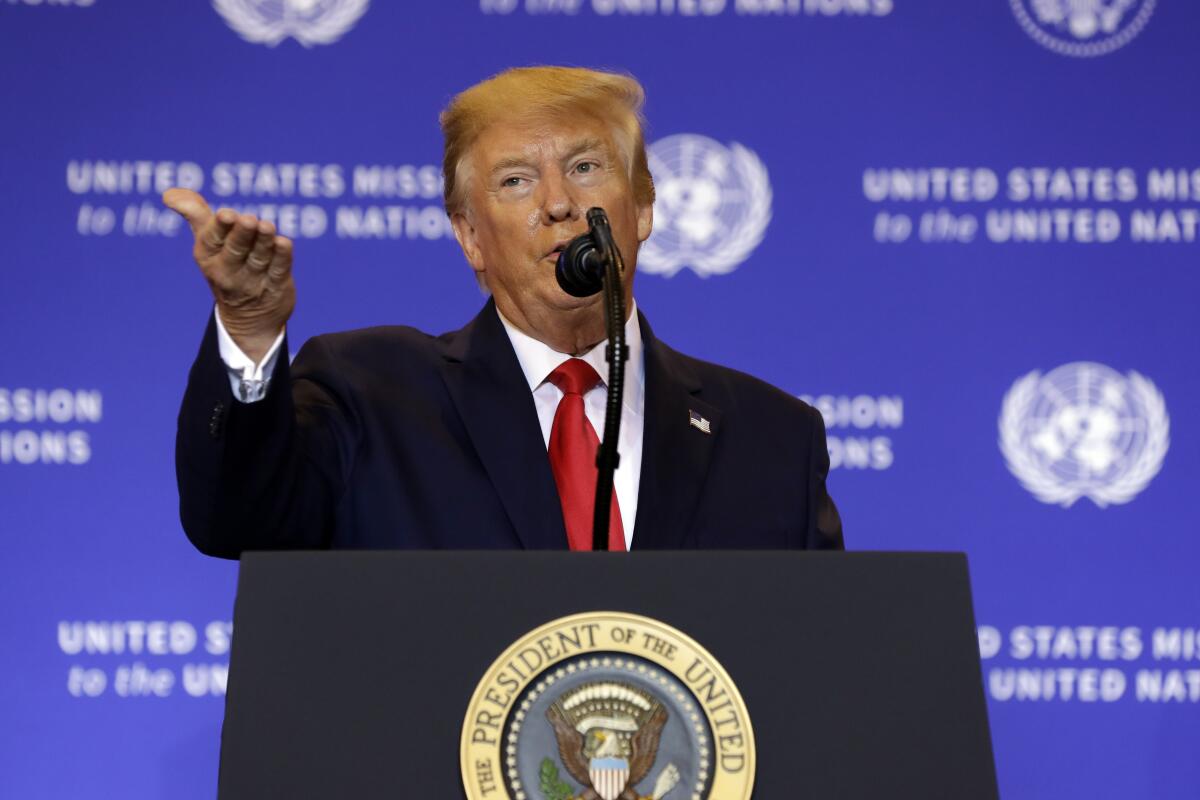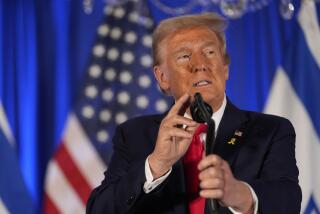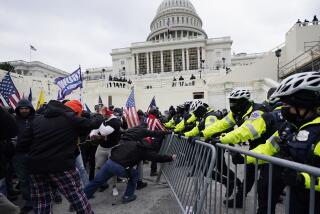Opinion: Is the cover-up worse than Trump’s Ukraine call?

The unnamed whistleblower’s complaint that the House Intelligence Committee released Thursday morning puts considerably more meat on the bones of the allegations surrounding President Trump’s July 25 phone call with Ukrainian President Volodymyr Zelensky. Informed by discussions with other executive-branch insiders and a variety of official documents, the whistleblower lays out how the president and his lawyer, former New York Mayor Rudy Giuliani, made a sustained effort over several months to press Ukrainian officials — and particularly those in Zelensky’s new administration — for help on issues related to Trump’s reelection campaign.
That’s the context framing Trump’s request for a “favor” from Zelensky in that one phone call. It was two favors, really. Trump wanted Zelensky to work with Giuliani and U.S. Atty. Gen. William Barr to advance a pair of conspiracy theories with only a tenuous connection at best to reality: that Ukrainian figures had concocted the evidence that Russians had hacked into Democratic National Committee servers in 2016, and that former Vice President Joe Biden had corruptly forced Ukraine to oust a prosecutor to shield his son Hunter, who was affiliated with a Ukrainian energy company.
As The Times editorial board noted, both of those theories have been persuasively debunked, and that aspect of the whistleblower’s complaint isn’t new. What is new is the allegation that the White House took unusual steps to destroy or hide evidence of the call.
“In the days following the phone call, I learned from multiple U.S. officials that senior White House officials had intervened to ‘lock down’ all records of the phone call, especially the word-for-word transcript of the call that was produced — as is customary — by the White House Situation Room,” the whistleblower wrote. “This set of actions underscored to me that White House officials understood the gravity of what had transpired on the call.”
But wait, you say — didn’t Trump order a release of the “complete, fully declassified and unredacted transcript”? That’s what the president tweeted Tuesday, but that’s not what the White House issued the next day. Instead, it released a reconstruction of the conversation from notes, which it emphasized was not a word-for-word account of the call.
According to the whistleblower, White House lawyers ordered the actual transcript to be removed from the usual electronic storage bin, from where such things are typically distributed to all Cabinet members, and placed instead in a bin for “classified information of an especially sensitive nature.”
The whistleblower conceded, though, that he or she did not know “whether similar measures were taken to restrict access to other records of the call, such as contemporaneous handwritten notes taken by those who listened to it.” Such notes were apparently used to create the memorandum about the call that the White House released Wednesday.
After the whistleblower submitted the complaint to the intelligence community’s inspector general, the White House threw up a new set of roadblocks. The acting director of national intelligence refused to turn the complaint over to the House and Senate Intelligence Committees, triggering a fight with the inspector general and the House Intelligence Committee that ultimately led to the release of the memorandum and the complaint, as well as to the whistleblower tentatively agreeing to testify on Capitol Hill.
Before you argue that Trump has become an open book on this issue, let me point to a story my colleague Eli Stokels broke Thursday. Thanking members of the United States’ U.N. delegation at a private event in New York, the president said:
“I want to know who’s the person, who’s the person who gave the whistleblower the information? Because that’s close to a spy.” As if the point weren’t clear enough, he went on: “You know what we used to do in the old days when we were smart? Right? The spies and treason, we used to handle it a little differently than we do now.”
Yup, that’s the definition of transparency: Telling members of your administration that they could be tried for treason if they reported some apparent abuse of power or illegal conduct by their president.
More to Read
A cure for the common opinion
Get thought-provoking perspectives with our weekly newsletter.
You may occasionally receive promotional content from the Los Angeles Times.











